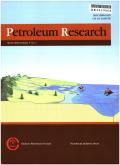Simulation-driven sensitivity analysis and optimization of critical parameters for maximizing CO2-EOR efficiency
IF 4
Q1 Earth and Planetary Sciences
引用次数: 0
Abstract
The application of Carbon Dioxide (CO2) injection in enhanced oil recovery (EOR) has evolved, making a major benefit for increasing the production level from mature reservoirs. This paper investigates the optimization of the CO2-EOR process based on using a new mode of simulation-based sensitivity analysis to understand two main proposed strategies, namely continuous gas injection and water-alternating-gas (WAG) injection. Prominent dynamical features including multiphase flow and displacement mechanisms were effectively captured in the form of a detailed reservoir model developed with considerable care for both techniques. The performance of each injection method was determined from a comprehensive analysis on the major production performance metrics: i) Oil recovery factor, ii) Gas-oil ratio iii) Cumulative oil production. Applying a wide range of sensitivity methods that included proxy model, Morris analysis and Sobol method were used to analyze the main parameters affecting the effectiveness of CO2 injection. The analysis then produced an optimization framework highlighting conditions conducive to achieving maximum oil recovery. The results of the study point to the effectiveness of WAG injection strategy in promoting oil recovery through better mobility control and lower gas breakthrough risk compared with continuous gas injection. This approach enhances sweep efficiency and highlights the significance of selecting appropriate injection strategies to maximize recovery in immiscible CO2 flooding processes. The alternating phases of water and CO2 in the Water-Alternating-Gas (WAG) process are crucial for optimizing oil recovery outcomes.
模拟驱动的敏感性分析和关键参数优化,以最大限度地提高CO2-EOR效率
二氧化碳(CO2)注入在提高采收率(EOR)中的应用不断发展,为提高成熟油藏的生产水平带来了重大效益。本文基于一种新的基于模拟的敏感性分析模式,研究了CO2-EOR过程的优化,了解了两种主要的策略,即连续注气和水-气交替(WAG)注气。突出的动力学特征,包括多相流和驱替机制,以详细的油藏模型的形式被有效地捕获,这两种技术都非常小心地开发了。每种注入方法的性能是通过对主要生产性能指标的综合分析来确定的:i)采收率,ii)气油比,iii)累积产油量。采用代理模型、Morris分析法和Sobol法等多种灵敏度方法对影响CO2注入效果的主要参数进行了分析。然后,分析产生了一个优化框架,突出了有利于实现最大采收率的条件。研究结果表明,与连续注气相比,WAG注气策略可以通过更好的流动性控制和更低的气侵风险来提高采收率。该方法提高了波及效率,并强调了在非混相CO2驱过程中选择合适的注入策略以最大化采收率的重要性。在水-气交替(WAG)过程中,水和二氧化碳的交替相对于优化采收率至关重要。
本文章由计算机程序翻译,如有差异,请以英文原文为准。
求助全文
约1分钟内获得全文
求助全文
来源期刊

Petroleum Research
Earth and Planetary Sciences-Geology
CiteScore
7.10
自引率
0.00%
发文量
90
审稿时长
35 weeks
 求助内容:
求助内容: 应助结果提醒方式:
应助结果提醒方式:


